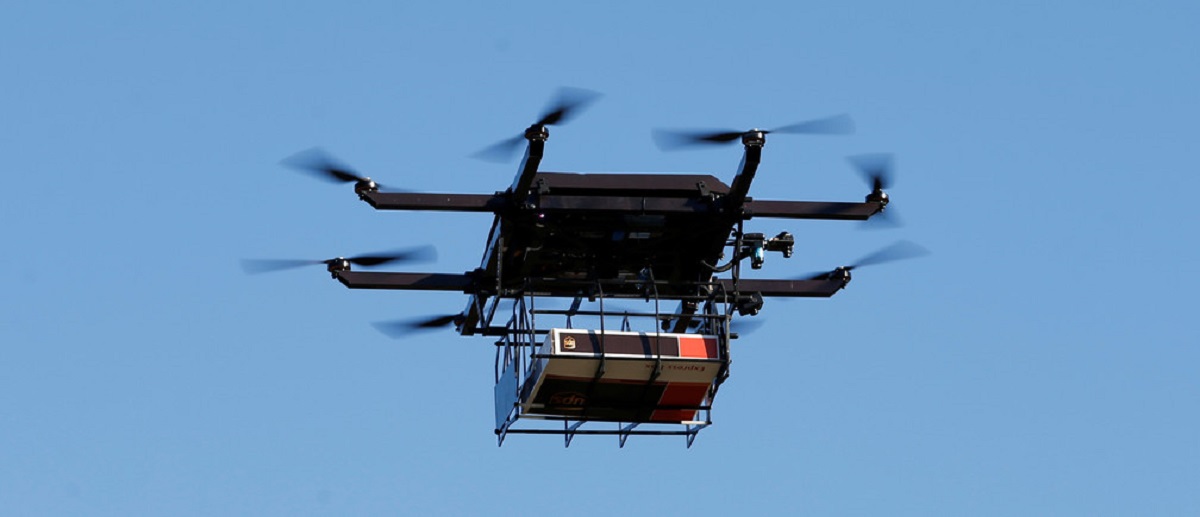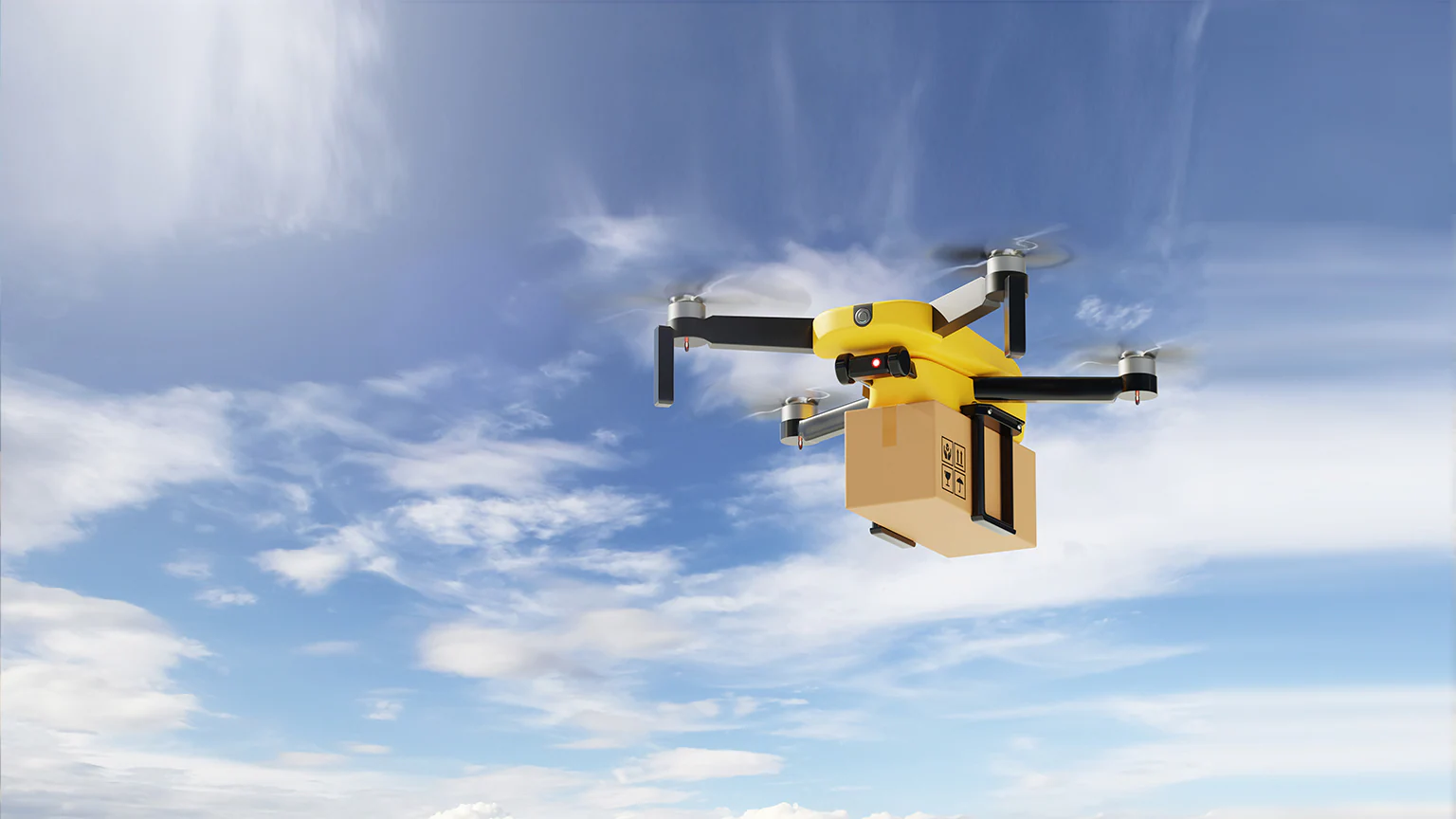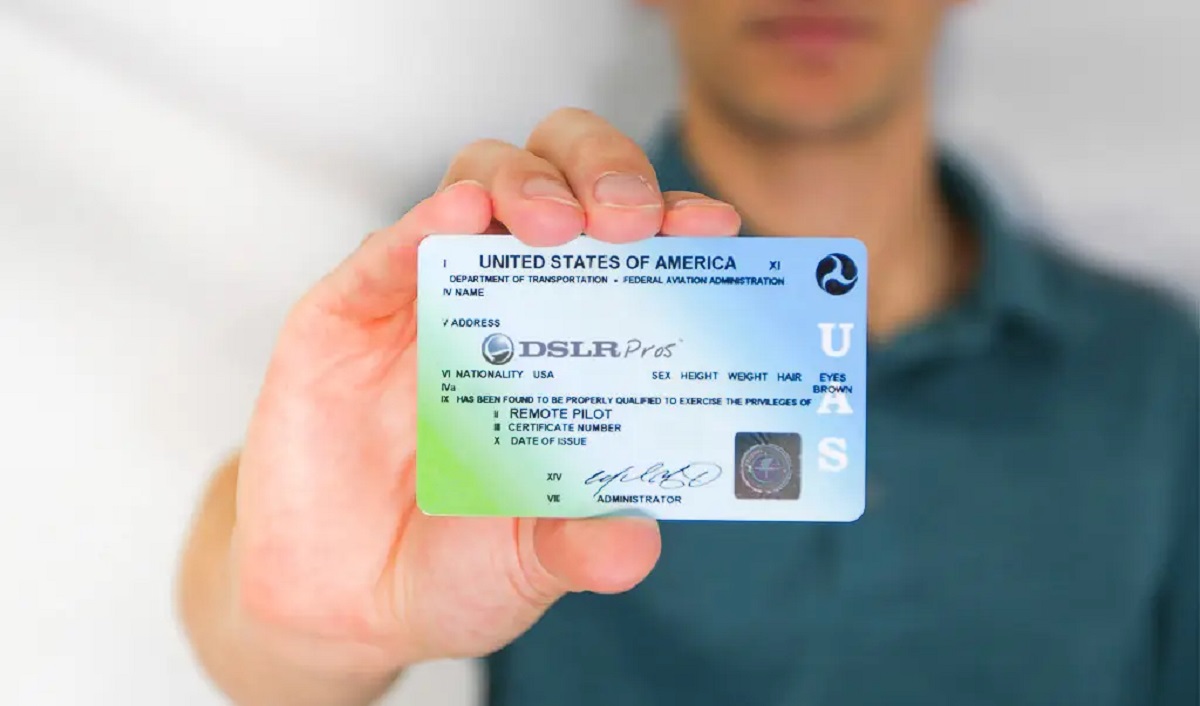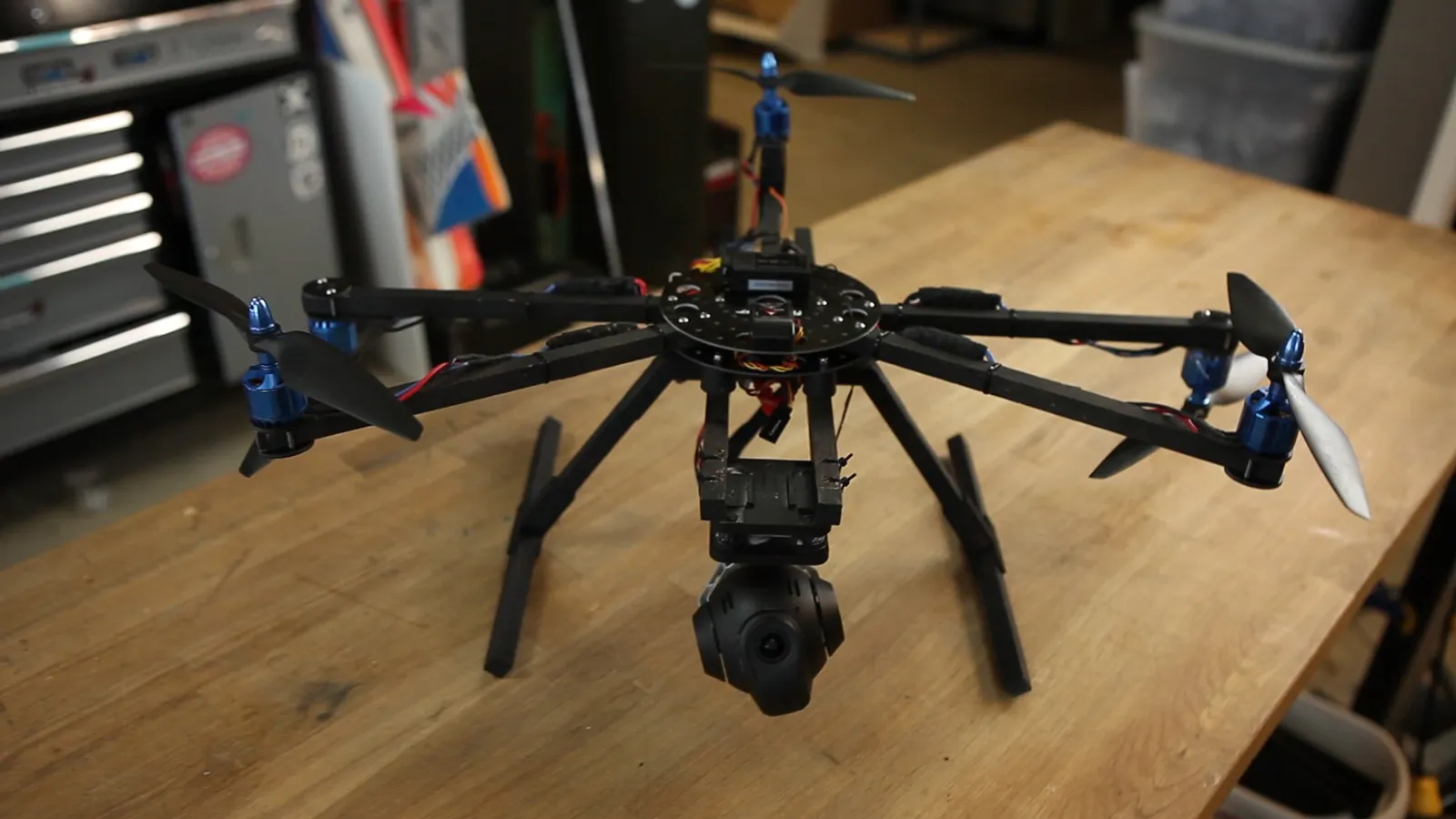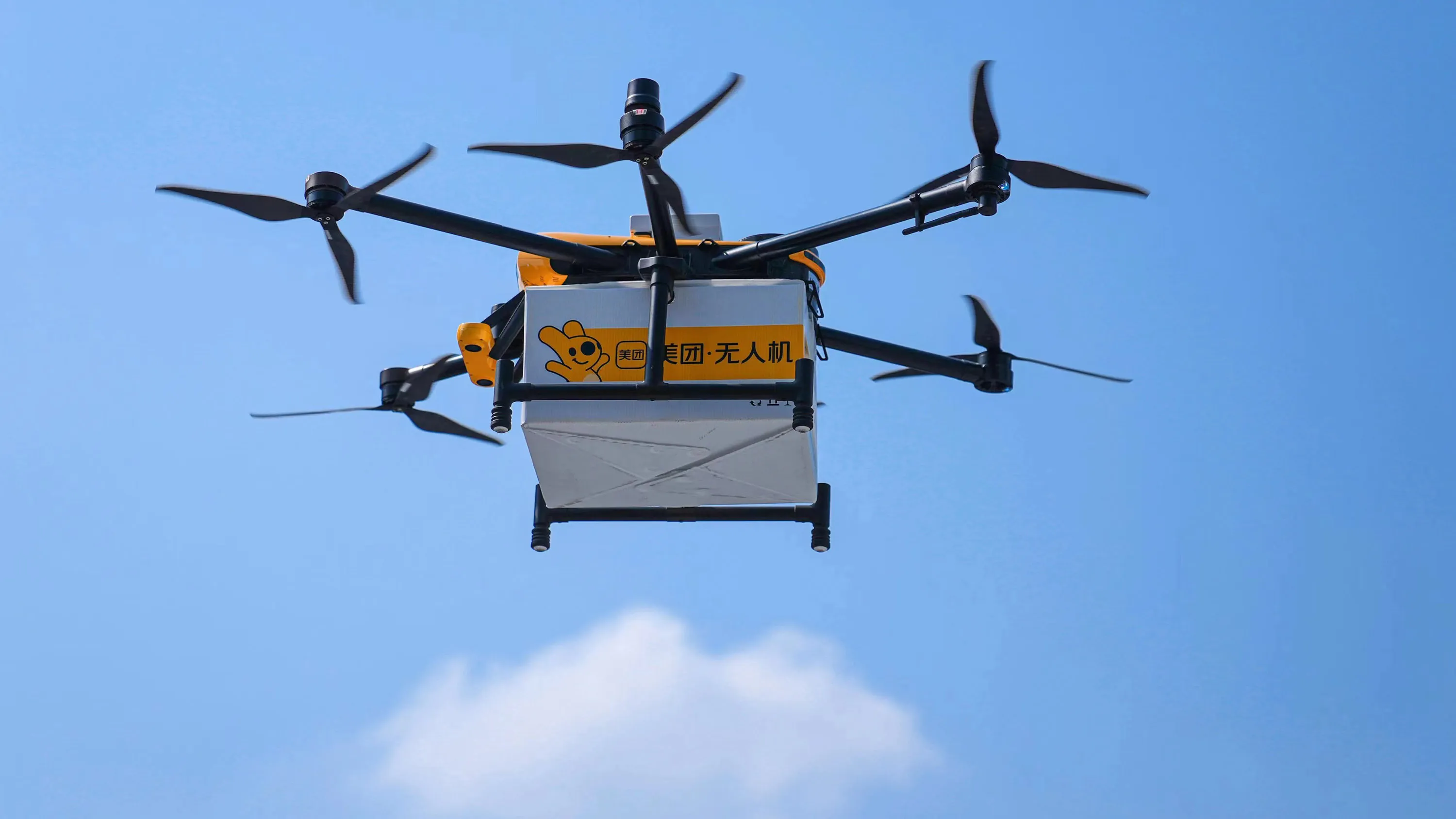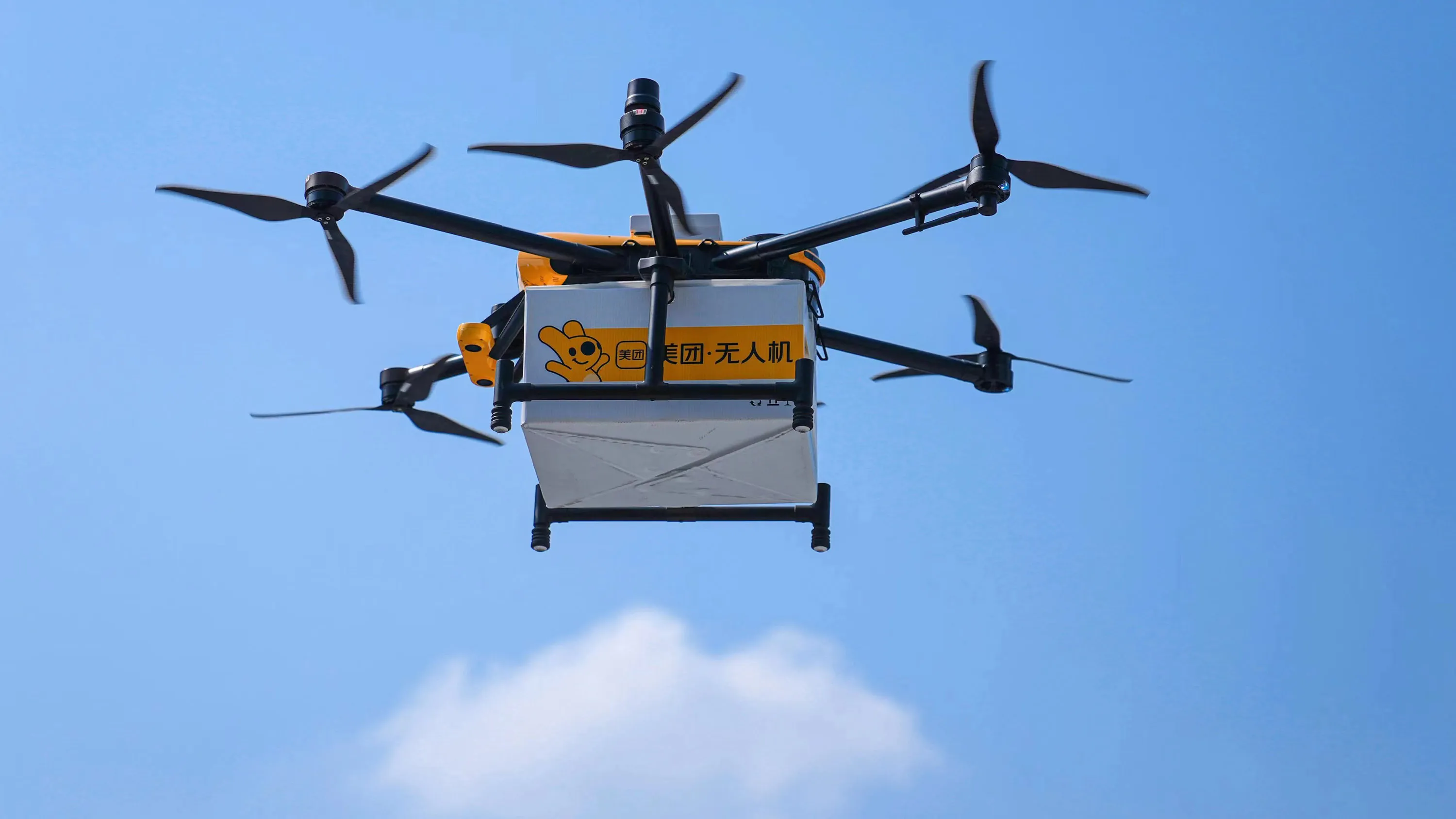Introduction
Welcome to the future of delivery – where unmanned aerial vehicles, more commonly known as drones, are set to revolutionize the way goods are transported. With the evolution of technology and the growing demand for faster and more efficient delivery services, drone delivery has emerged as a promising solution. This innovative method involves using autonomous flying devices to transport packages from one location to another, bypassing traffic congestion and reducing delivery times substantially.
The concept of drone delivery may seem like something out of a science fiction novel, but it is quickly becoming a reality. Companies like Amazon and Google have been at the forefront of experimenting with drone delivery systems, testing the waters for a future where drones can seamlessly transport goods to our doorsteps.
The idea behind drone delivery is simple – leveraging the capabilities of unmanned aerial vehicles to carry lightweight packages and deliver them within a short period of time. Drones are equipped with advanced navigational systems, cameras, and sensors, allowing them to safely and efficiently navigate through the air and land at precise locations.
One of the key factors driving the adoption of drone delivery is the demand for faster and more convenient shipping options. Traditional delivery methods, such as ground-based vehicles or postal services, often face challenges like traffic congestion, weather conditions, and limited capacity. Drone delivery presents a compelling solution to these problems, offering the potential for expedited delivery times and improved customer satisfaction.
Beyond the realm of e-commerce, drone delivery also holds immense potential for applications in emergency response, healthcare, and rural areas with limited access to transportation infrastructure. Drones can rapidly transport medical supplies, life-saving equipment, and even perform search and rescue missions in remote or hard-to-reach locations.
However, as with any emerging technology, drone delivery is not without its challenges and limitations. In the following sections, we will explore the advantages, hurdles, and the future outlook of drone delivery in more detail.
Current State of Drone Delivery
The field of drone delivery has made significant strides in recent years, with several companies conducting successful pilot tests and launching small-scale delivery programs. However, it is important to note that drone delivery is still in its early stages and is not yet a widespread or mainstream method of delivery.
Companies like Amazon, Walmart, and UPS have been leading the way in testing drone delivery services. Amazon’s Prime Air program aims to use drones to deliver packages directly to customers’ doorsteps within 30 minutes. Walmart has also been conducting trials for grocery delivery using drones, while UPS has focused on healthcare-related deliveries, including medications and vaccines.
While these pilot projects have showcased the potential of drone delivery, there are several factors that currently limit its widespread adoption. One of the main challenges is the regulatory and legal framework surrounding drone operations. Governments around the world are still in the process of developing rules and regulations that govern the use of drones for commercial purposes. These regulations focus on airspace restrictions, flight safety, privacy concerns, and the certification and training of drone operators.
Additionally, technical challenges remain a hurdle in scaling up drone delivery operations. Battery life and payload capacity are limitations that affect the range and carrying capacity of drones. Currently, most delivery drones have limited flight times and can only carry small packages. The development of more efficient batteries and lightweight materials is crucial for expanding the capabilities of drone delivery.
Despite these challenges, there have been successful implementations of drone delivery services in specific areas. For example, in Rwanda, the company Zipline has been using drones to deliver medical supplies to remote and underserved areas. Their drones are capable of carrying a payload of up to 1.5 kilograms and can travel distances of up to 150 kilometers. This demonstrates the potential of drone delivery to address critical needs in inaccessible regions.
In summary, the current state of drone delivery is characterized by successful pilot projects and small-scale implementations. However, regulatory and technical challenges keep it from becoming a widespread and mainstream delivery method at this time. As advancements continue to be made in these areas, there is great potential for the future growth and expansion of drone delivery.
Advantages of Drone Delivery
Drone delivery offers numerous advantages that have the potential to revolutionize the logistics and transportation industry. Here are some of the key benefits:
1. Faster Delivery Times: One of the most significant advantages of drone delivery is the speed at which packages can be transported. Drones can bypass traffic congestion and take direct routes to deliver goods, reducing delivery times significantly. This is especially beneficial for time-sensitive products, such as medical supplies or perishable items, where every minute counts.
2. Cost-Effective: Drones have the potential to lower the cost of delivery operations. By eliminating the need for a human driver and traditional delivery vehicles, companies can save on labor and fuel expenses. This cost-effectiveness can be particularly valuable for small businesses or start-ups that may have limited resources for logistics.
3. Improved Access: Drone delivery can overcome geographical barriers and improve accessibility to remote or hard-to-reach areas. This is especially important for communities with limited access to transportation infrastructure or during emergencies when traditional roads may be inaccessible. By using drones, essential supplies can be delivered swiftly, saving lives and providing aid where it is needed most.
4. Environmental Sustainability: Drones are powered by electricity, meaning they produce zero emissions. Compared to traditional delivery vehicles, which contribute to air pollution and carbon emissions, drone delivery offers a more environmentally friendly option. By adopting drone delivery systems, companies can contribute to a greener and more sustainable future.
5. Enhanced Customer Experience: The convenience and novelty of drone delivery can create a unique and memorable customer experience. Imagine receiving a package delivered by a drone right to your doorstep. This innovative approach to delivery can generate positive brand associations and customer loyalty.
6. Flexibility and Scalability: Drone delivery systems can be easily scaled up or down based on demand. Companies can quickly adjust their fleet of drones to accommodate fluctuating delivery volumes, ensuring efficient operations during peak seasons or special events.
While there are clear advantages to drone delivery, it is important to address potential concerns such as privacy, safety, and the need for airspace regulations. Nevertheless, the advantages of drone delivery show great potential for transforming the way goods are transported, offering faster, cost-effective, and environmentally friendly delivery options.
Challenges and Limitations
While drone delivery holds immense promise, there are several challenges and limitations that need to be addressed before it can become a widespread reality. These challenges include:
1. Regulatory and Legal Hurdles: One of the biggest hurdles facing drone delivery is the complex and evolving regulatory landscape. Governments around the world are working to develop rules and guidelines for commercial drone operations, including airspace restrictions, flight safety protocols, and privacy concerns. Striking the right balance between ensuring safety and enabling innovation is essential for the growth of drone delivery.
2. Technical Limitations: Current drone technology still has some limitations that need to be overcome. Battery life is a primary concern, as most drones have limited flight times due to power constraints. Additionally, payload capacity is another limitation, with drones often only able to carry small packages. Advancements in battery technology and lightweight materials are necessary to address these technical challenges.
3. Weather Conditions: Weather conditions such as heavy rain, strong winds, or extreme temperatures can impact the ability of drones to safely operate. Adverse weather conditions can reduce flight range, affect payload capacity, and potentially compromise the safety of delivery operations. Developments in weather-resistant drones and advanced navigational systems are necessary to mitigate this limitation.
4. Safety and Security: Ensuring the safety of both the drones and the people on the ground is paramount. Collisions with other aircraft, buildings, or even people pose risks that need to be addressed. Robust systems for collision avoidance, geofencing, and emergency response protocols are crucial to minimize safety concerns. Additionally, the security of the delivery process, including package tampering or theft, needs to be addressed through secure packaging and tracking systems.
5. Public Perception: The acceptance and perception of drones among the public still need to be addressed. Concerns over privacy, noise pollution, and the potential for invasion of personal space are valid considerations. Companies in the drone delivery space must actively engage with communities, address concerns, and educate the public about the benefits and safety measures in place.
Addressing these challenges and limitations requires collaboration between regulatory bodies, industry stakeholders, and technological advancements. As progress is made in these areas, drone delivery will continue to move closer to widespread adoption, offering a new era of delivery possibilities.
Regulatory and Legal Hurdles
One of the primary obstacles hindering the widespread adoption of drone delivery is the complex and evolving regulatory environment surrounding unmanned aerial vehicles (UAVs). Governments worldwide are grappling with developing rules and regulations that strike a balance between fostering innovation and ensuring safety and privacy. These regulatory and legal hurdles are key challenges that need to be addressed for the successful integration of drone delivery into the existing transportation infrastructure.
The first challenge lies in airspace regulations. Drones, by their nature, fly in the same airspace as manned aircraft. To avoid collisions and ensure safety, authorities need to establish specific rules governing drone operations, such as designated flight paths, altitude restrictions, and communication protocols with traditional air traffic control. Striking the right balance between accommodating drone operations and maintaining the integrity of the airspace is a complex task that requires collaboration between regulatory bodies, aviation authorities, and drone industry stakeholders.
Privacy concerns also pose a significant hurdle. Drones equipped with high-resolution cameras and sensors have the potential to infringe upon individuals’ privacy rights. Strict regulations need to address how and when drones can capture images or collect data, particularly in residential areas. Transparent policies outlining data collection, storage, and usage practices are necessary to alleviate public concerns and ensure compliance with privacy laws and regulations.
Additionally, certification and training requirements for drone operators need careful consideration. Ensuring that operators have the necessary skills, knowledge, and experience to safely operate drones is crucial. Certifying individuals through standardized procedures and training programs will help mitigate risks and promote responsible drone operation. Implementing an accreditation system that ensures competency and compliance can play a vital role in addressing safety concerns and building public trust in drone delivery services.
International harmonization of regulations is another challenge. As drone delivery has global potential, aligning regulations across different jurisdictions is essential to enable cross-border operations. Harmonization efforts should address airspace access, operational standards, and data privacy to facilitate efficient and seamless drone delivery services on a global scale.
Furthermore, ongoing updates and adaptation of regulations are necessary as technology advances and drone capabilities evolve. The regulatory framework must be flexible enough to accommodate emerging technologies and innovation while ensuring public safety and security. Regular consultations and collaboration between regulatory bodies, industry experts, and other stakeholders are essential to stay abreast of technological advancements and adapt regulations accordingly.
In summary, the regulatory and legal hurdles in drone delivery encompass airspace regulations, privacy concerns, operator certification, international harmonization, and adaptability to evolving technology. Streamlining and addressing these challenges will create a favorable environment for the growth and integration of drone delivery, unlocking its full potential in transforming the transportation industry.
Major Players in Drone Delivery
The field of drone delivery is rapidly evolving, and several major players have emerged as pioneers in this industry. These companies are driving innovation, conducting successful pilot projects, and shaping the future of drone delivery. Let’s take a closer look at some of the leading players in this space:
1. Amazon: Amazon’s Prime Air program is at the forefront of drone delivery. The company has been conducting extensive testing to develop a reliable and efficient delivery system using drones. With a focus on delivering packages directly to customers’ doorsteps within 30 minutes, Amazon aims to revolutionize the e-commerce industry by combining advanced drone technology with their extensive logistics network.
2. UPS: United Parcel Service (UPS) is another major player exploring the potential of drone delivery. UPS has partnered with innovative drone manufacturers and service providers to develop solutions for healthcare logistics and urgent package deliveries. Their collaboration with Matternet has enabled several successful tests for transporting medical supplies by drones in selected areas.
3. Alphabet (Google): Alphabet, the parent company of Google, has its own drone delivery project called Wing. Wing has been conducting trials in several countries, including Australia and the United States. They have focused on delivering a wide range of products, such as food, beverages, and medications, to customers in suburban areas using their autonomous drones.
4. Zipline: Zipline is a company dedicated to using drones for medical deliveries, particularly in areas with limited access to healthcare infrastructure. They have successfully implemented their drone delivery system in Rwanda, delivering blood, vaccines, and other critical medical supplies to remote and hard-to-reach areas. Zipline has shown that drone delivery can save lives by ensuring timely access to essential healthcare products.
5. DHL: DHL, a prominent global logistics company, has been actively involved in testing and integrating drones into their operations. They have focused on utilizing drones for last-mile deliveries, especially to locations with challenging terrains or remote areas. DHL has conducted successful trials in delivering packages to islands and mountainous regions, proving the feasibility and efficiency of drone delivery in certain contexts.
Other notable players in the drone delivery space include Uber Eats, which has been exploring the use of drones for food delivery, and Walmart, which has been piloting drone delivery for groceries. The collective efforts of these major players are driving advancements in drone technology, shaping regulations, and pushing the boundaries of what is possible in the realm of delivery services.
As the industry continues to evolve, new entrants and collaborations are anticipated, further expanding the landscape of drone delivery and propelling its integration within the global supply chain.
Viable Use Cases for Drone Delivery
Drone delivery has the potential to revolutionize various industries and address specific challenges in unique ways. Here are some compelling use cases where drone delivery can make a significant impact:
1. Healthcare: Drone delivery can play a crucial role in providing life-saving medications and medical supplies to remote or inaccessible areas. In emergency situations or natural disasters, drones can rapidly transport critical medical items, such as vaccines, blood, and organs, to ensure timely access to healthcare resources.
2. E-commerce: The e-commerce industry can greatly benefit from drone delivery. By using drones for last-mile delivery, companies can offer faster shipping options to customers, reducing transit times and enhancing the overall shopping experience. Drones can also enable delivery to areas with limited or challenging road networks, ensuring accessibility for customers in remote locations.
3. Food Delivery: Drone delivery can revolutionize the food delivery industry by offering faster and more efficient service. Restaurants and food delivery platforms can use drones to transport meals directly from the kitchen to the customer’s doorstep, minimizing delivery times and keeping the food fresh. This can be especially valuable for delivering meals to locations with heavy traffic congestion or congested urban areas.
4. Disaster Relief: During natural disasters or humanitarian crises, drone delivery can provide critical aid and emergency supplies to affected areas. Drones can quickly transport food, water, medical supplies, and communication devices to areas where traditional transportation methods are disrupted or inaccessible. This enables faster response times and helps save lives in emergency situations.
5. Environmental Monitoring: Drones equipped with sensors and cameras can be used for environmental monitoring and conservation efforts. They can monitor wildlife populations, protect endangered species, survey habitats, and assess the impact of human activities on ecosystems. By leveraging drone technology, researchers and conservationists can gather valuable data while minimizing disturbances to delicate environments.
6. Infrastructure Inspections: Drones can revolutionize the inspection and maintenance of infrastructure, such as bridges, power lines, and pipelines. They can quickly conduct aerial surveys, capture high-resolution images and videos, and collect data to assess the condition of infrastructure. This can lead to more efficient maintenance planning, cost savings, and improved safety for inspectors.
These are just a few examples of the viable use cases for drone delivery. As the technology continues to advance and regulatory frameworks evolve, we can expect to see even more creative applications and benefits across various industries.
Future Outlook and Predictions
The future of drone delivery holds immense potential and promises radical transformations in the transportation and logistics industries. As technology continues to advance and regulatory frameworks evolve, here are some key predictions and outlooks for the future of drone delivery:
1. Expansion of Delivery Networks: Drone delivery networks will continue to expand, covering larger areas and reaching more regions. Companies will invest in infrastructure and logistics systems specifically designed for efficient drone operations, enabling faster and more widespread delivery services.
2. Increased Payload Capacity: Technological advancements will lead to the development of drones with higher payload capacities. This will enable the delivery of larger packages, making drone delivery viable for a broader range of products beyond small parcels and lightweight items.
3. Integration with Autonomous Vehicles: Autonomous vehicles, including ground-based robots and delivery vans, will work in tandem with drones to enhance the efficiency and effectiveness of last-mile deliveries. These integrated systems will optimize the delivery process by utilizing drones for air transportation and ground-based vehicles for proximity and local deliveries.
4. Urban Air Mobility Ecosystem: The concept of urban air mobility (UAM) will gain momentum, leading to the creation of a comprehensive ecosystem for managing drone operations in urban environments. UAM will involve the integration of drones, air traffic management systems, and advanced communication networks to enable safe and efficient urban drone deliveries.
5. Artificial Intelligence and Machine Learning: Artificial intelligence and machine learning algorithms will play a critical role in optimizing drone delivery routes, predicting demand patterns, and ensuring safe operations. These technologies will enable drones to make autonomous decisions, adapt to changing conditions, and optimize their performance based on real-time data.
6. Integration of Sustainable Energy Solutions: To overcome the limitation of battery life, drone delivery systems will increasingly utilize sustainable energy solutions, such as solar panels or hydrogen fuel cells. This will extend the flight range and increase the operational capabilities of drones, making them more reliable and efficient.
7. Collaborative Efforts and Standardization: Industry players, regulatory bodies, and technology providers will collaborate to establish industry standards, best practices, and uniform regulations. Standardization efforts will focus on safety, security, privacy, and interoperability, fostering trust, and enabling a seamless integration of drone delivery services.
8. Customized Solutions for Vertical Industries: Drone delivery solutions will become more specialized and tailored to the requirements of specific industries. Whether it’s healthcare, e-commerce, or disaster relief, drones will be equipped with features and capabilities designed to meet the unique challenges and needs of each sector.
In summary, the future of drone delivery looks promising, with advancements in technology, evolving regulations, and expanding networks. As the market matures, we can expect to witness innovative applications, improved efficiencies, and a significant impact on the way goods are transported, ultimately bringing greater convenience and benefits to consumers and businesses alike.
Conclusion
Drone delivery has the potential to revolutionize the way goods are transported, offering faster, more efficient, and environmentally friendly delivery options. Despite the challenges and limitations, the current state of drone delivery showcases its viability and immense promise. Companies like Amazon, UPS, and Google are actively exploring and investing in drone delivery systems, conducting pilot projects, and pushing the boundaries of what is possible.
Advantages such as faster delivery times, cost-effectiveness, improved access to remote areas, and enhanced customer experiences make drone delivery an attractive proposition for various industries. From healthcare to e-commerce, disaster relief to environmental monitoring, the applications of drone delivery are vast and wide-ranging.
However, for drone delivery to become a widespread reality, regulatory and legal hurdles need to be addressed. Governments must establish clear guidelines and regulations to ensure safety, privacy, and responsible drone operations. Technical limitations, such as battery life and payload capacity, also require continuous advancements for the scalability of drone delivery systems.
The future outlook for drone delivery is highly promising. We can anticipate expanded delivery networks, increased payloads, integration with autonomous vehicles, and the development of comprehensive urban air mobility ecosystems. Artificial intelligence, sustainable energy solutions, and industry collaboration will drive innovation and standardization in this space.
In conclusion, while there are still challenges to overcome, the potential of drone delivery to transform the transportation and logistics industries cannot be ignored. With continued advancements, collaboration between stakeholders, and the resolution of regulatory hurdles, we are on the cusp of a new era in delivery services – one that is faster, smarter, and more efficient, all thanks to the power of drones.







